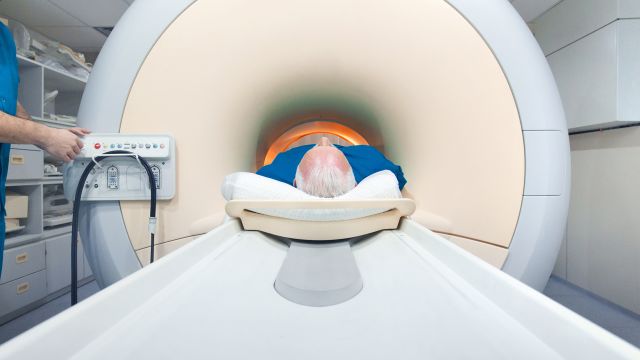Updated on November 16, 2023
There are two broad categories of lung cancer—small cell lung cancer (SCLC) and non-small cell lung cancer (NSCLC). Non-small cell lung cancer is the more common of the two, accounting for roughly 85 percent of all cases of lung cancer.
Like other types of cancer, NSCLC is typically assigned a stage during diagnosis. Staging describes how far the cancer has spread from the initial site and how much cancer is in the body. While every case of NSCLC is somewhat unique, staging gives healthcare providers a common language when discussing cancer. It is also useful for deciding on treatment approaches and measuring a response to treatment.
Here, we will look at stage III NSCLC, how this stage compares to other stages, and why staging is only one piece of information that is considered when treating cancer.
Understanding staging
There are a number of different staging systems. One that is commonly used for NSCLC is the American Joint Committee on Cancer TNM system. TNM stands for “tumor, nodes, metastasis,” and takes into account the size of the main tumor (T), if the cancer has spread to nearby lymph nodes (N), and if the cancer has metastasized to other sites in the body (M). Based on this information, the cancer is given a stage between 0 and IV. Stage 0 is the earliest stage, and stage IV is the most advanced stage.
Stages are further divided into substages. Stage III, for example, is divided into IIIA, IIIB, and IIIC.
Understanding stage III
Stage III NSCLC is sometimes referred to “locally advanced.” It describes NSCLC that has spread within the chest, but has not metastasized (spread to distant sites in the body).
Because of the unpredictable ways in which cancer can spread, specific cases of NSCLC that are stage III can be very different from one another. Different in terms of the size of the tumors. Different in terms of what nodes the cancer has spread to. Different in terms of what tissues and/or organs the tumors have grown into. And this is before taking into account other factors, such as:
- Biomarkers. Biomarker testing looks at the molecular biology of cancer cells to identify specific genetic mutations or the presence of the PD-L1 protein. This will help determine if targeted therapies or immunotherapy may be appropriate treatments.
- Grade. Also called differentiation, grade refers to how abnormal the cancer cells appear when examined under a microscope, or how different the cancer cells appear when compared to normal cells.
- The patient. A person’s medical history, overall health, age, needs, and preferences are other factors that healthcare providers consider when choosing between treatment options.
Treating stage III compared to earlier stages
Compared to stages 0, I, and II, stage III NSCLC is more advanced. This means that it has spread more and will require a different approach to treatment.
Because the cancer is more localized in stages I and II, surgery to remove the tumor or tumors is often the favored initial treatment in many cases. Radiation therapy to shrink tumors may also be used. Depending on hormonal receptor (HR) and human epidermal growth factor receptor 2 (HER2) status, a variety of drug therapies may be used as well—chemotherapy, HR-targeted drugs, HER2-targeted drugs, hormone therapy, and immunotherapy.
In contrast, there is no preferred treatment for stage III NSCLC. As mentioned above, specific cases of stage III NSCLC can be very different from other cases. Treatment plans are individualized, based on information about the cancer and about the patient. People with stage III NSCLC should work with a multidisciplinary team of healthcare providers who can guide them through treatment. A combination of chemotherapy and radiation therapy are often used, and treatment may also involve surgery, immunotherapy, and targeted therapy.
Stage III NSCLC compared to stage IV
With stage III, cancer is still contained within the chest. With stage IV, cancer has spread to distant sites in the body, such as the brain, bones, distant lymph nodes, and the fluid around the heart or lungs. Treatment for stage IV is also individualized, taking into account the sites the cancer has spread to, a person’s medical history, and their overall health. It may involve a combination of targeted therapy, immunotherapy, and chemotherapy. Radiation therapy and surgery may also be used to target specific tumor sites.






